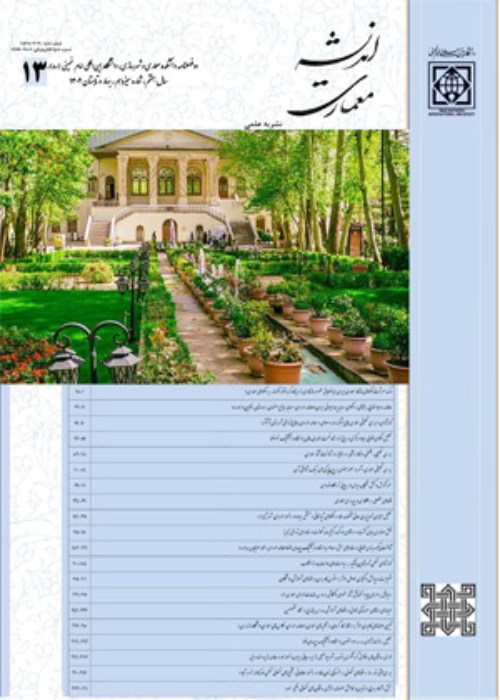The role of social changes on the evolution of In-Between Spaces in Qajar era by the use of space as an instrument
Social changes can be considered among the biggest reasons for space changes. Urban spaces and architecture can be considered as human-made phenomena in geographical spaces which are affected by social, economic, cultural and environmental situations. Iranians relationshipswith the west their familiarity with scientific revolutions, industrialized as well as technological developments has begun when this familiarity was formed through traveling, doing business, educating as well as the European states political and economic penetration developed in Iran and then, they started knowing about their country’s underdevelopment, the corruption of the ruling system of the Shah which led to people’s opposition toward Shah and his system. All this development led to some great changes in various domains. There seemed to be a well-matching relationship between the values and the environmental realities before the 19th century in Iran, i.e. the society and the social structure were in quite balance. Though, in the current century, there seems to be some big non-matching changes which are affected by some inside and outside factors. This issue has been discussed in Johnson’s Functionalism Theory. These factors led to some transformations in values and finally to the phenomenon of the Constitutionalism which has been among the greatest changes in the history of Iran. Majority of the historical and social researchers believe that these outside factors facilitated the process of the Constitutionalism in Iran. This great social development had some various effects in different domains including architecture and city planning, among the others. In this study, we try to investigate those value-changing outside factors which influenced space directly.Research Question: how social changes affected the in-between space developments in Qajar era?
The methodology of this study is qualitative, deductive and strategic.
the influence of outside factors of changes on values in this historic period and its direct influence on the environment can be briefly explained in the following three reasons: first, the role of new teachings which led to the formation of a well-educated social class named elite which can be classified in some more subclasses. Second, the role and influence of Arab states in terms of political and economic aspects which has influenced and used the country under their dominance. This phenomenon had led to western products to dominate the Iranian market which has played a significant part in the import of western ideology to Iran. And third, the role of industrialization revolution and its following influences in western countries which have dominated the Iranian society significantly. These three factors have played major roles in the reformation of traditional values and the inclination toward the new trends which become influential in structural reformations. According to the “space instrument” approach of this study, it can be easily noticed that architecture and city planning of this era have been an instrument to demonstrate power and ease the sense of underdevelopment against the western states. In fact, it can be claimed that the reason of changes in in-between space has been the formation of instrumental thoughts toward the issue of space which has made space as an instrument to change values as well as impose a new style of life and ideology. Note that Qajar era has been among the most sensitive eras in the history of Iran during which tradition and modernity has come into closer connection to each other and new forms of architecture and city planning in comparison to the previous eras. The social changes of this era have influenced the cities and architecture in terms of modernization. This phenomenon has happened initially through the following exact western architecture and city planning which reveals the instrumental use of architecture in this historic era.
- حق عضویت دریافتی صرف حمایت از نشریات عضو و نگهداری، تکمیل و توسعه مگیران میشود.
- پرداخت حق اشتراک و دانلود مقالات اجازه بازنشر آن در سایر رسانههای چاپی و دیجیتال را به کاربر نمیدهد.



